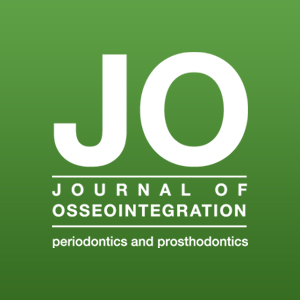Clinical outcomes of small-diameter implant-retained overdentures: a retrospective analysis

Submitted: 6 April 2021
Accepted: 7 April 2021
Published: 6 October 2021
Accepted: 7 April 2021
Abstract Views: 673
pdf: 723
Publisher's note
All claims expressed in this article are solely those of the authors and do not necessarily represent those of their affiliated organizations, or those of the publisher, the editors and the reviewers. Any product that may be evaluated in this article or claim that may be made by its manufacturer is not guaranteed or endorsed by the publisher.
All claims expressed in this article are solely those of the authors and do not necessarily represent those of their affiliated organizations, or those of the publisher, the editors and the reviewers. Any product that may be evaluated in this article or claim that may be made by its manufacturer is not guaranteed or endorsed by the publisher.


 https://doi.org/10.23805/JO.2021.13.04.5
https://doi.org/10.23805/JO.2021.13.04.5








